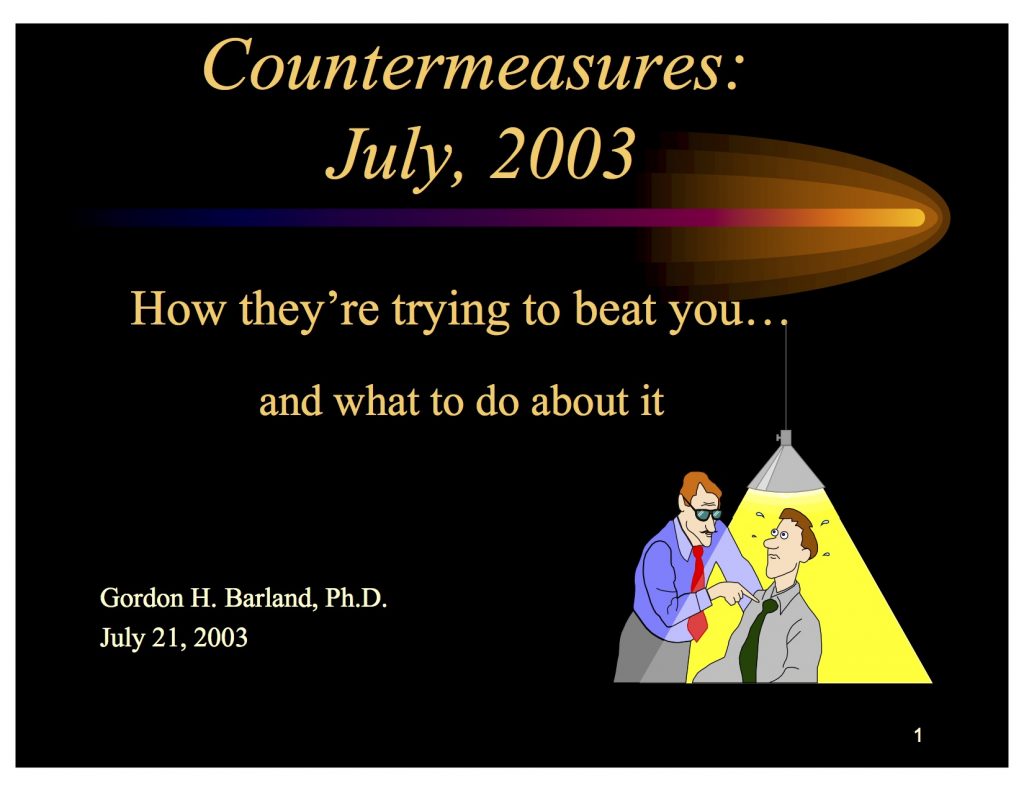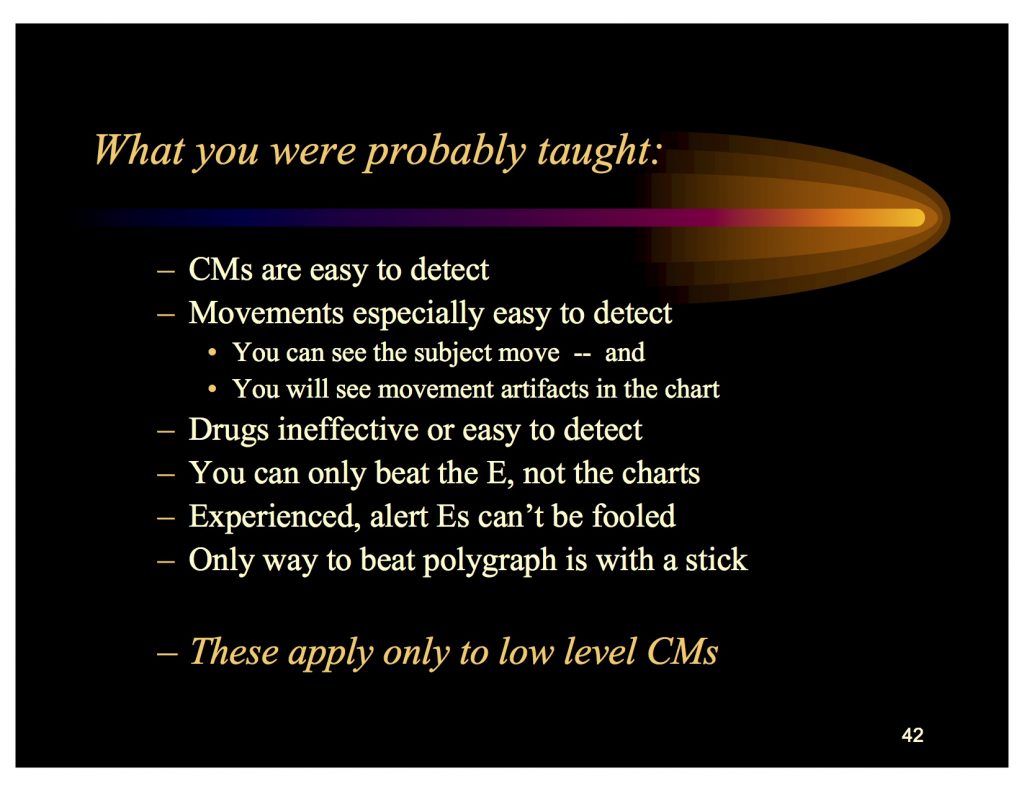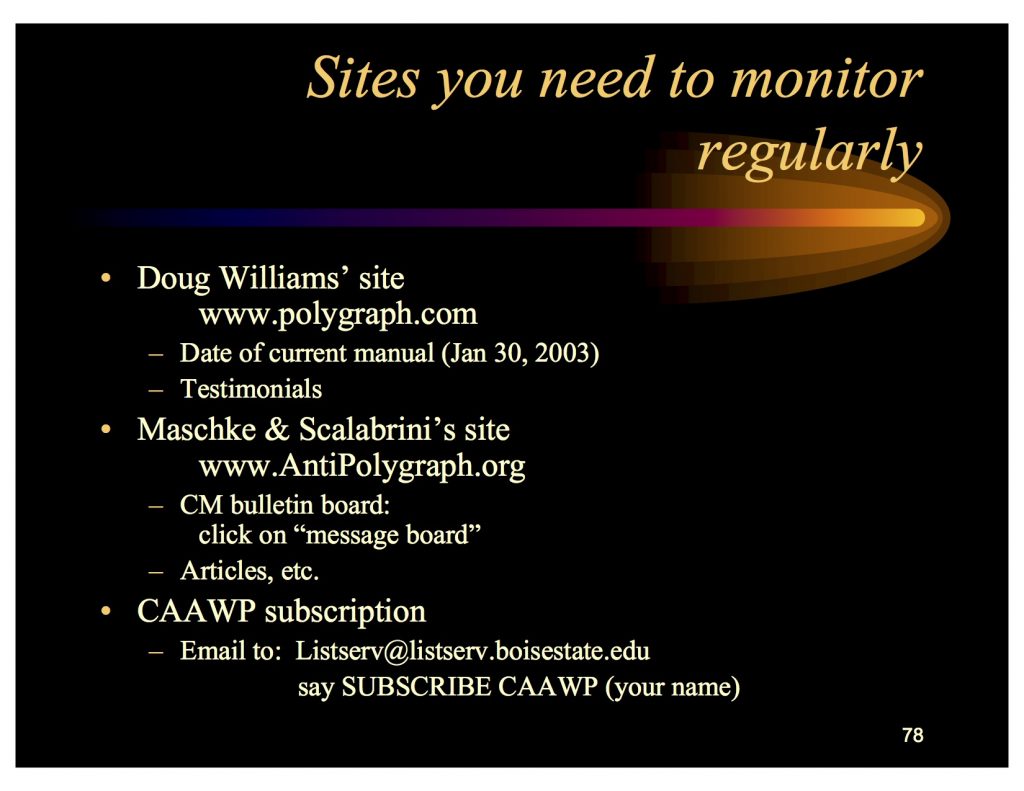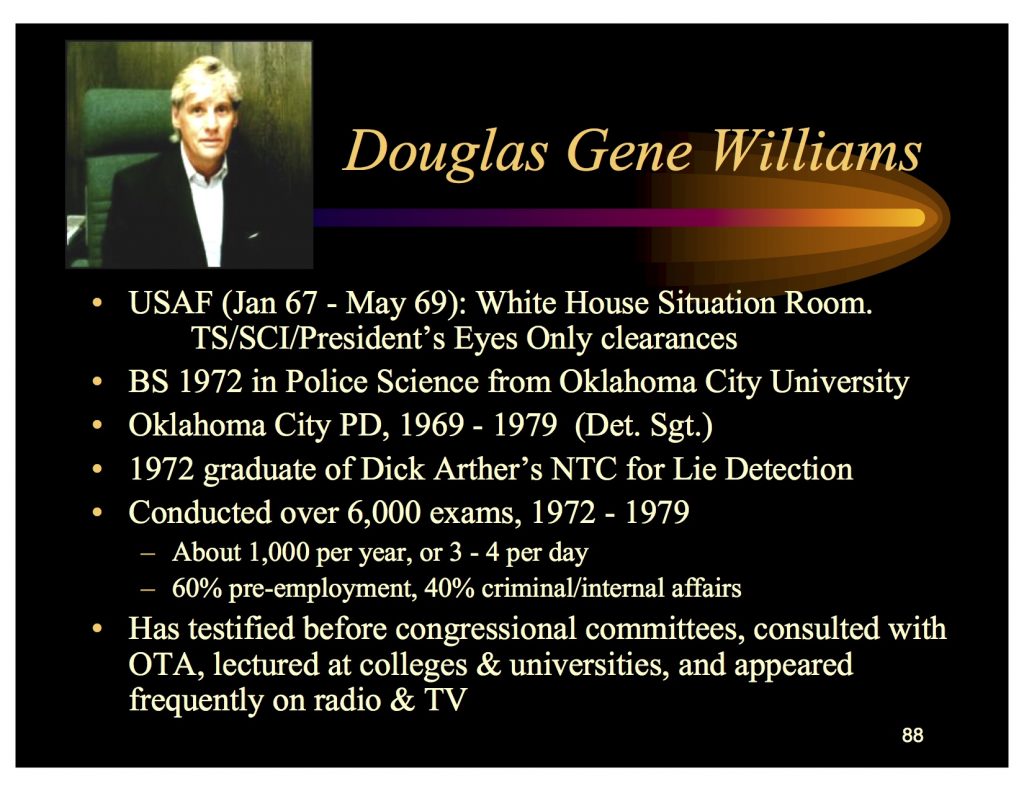Gordon H. Barland, Ph.D. worked at the Department of Defense Polygraph Institute (now the National Center for Credibility Assessment) from 1986 until his retirement in 2000. During this period, he conducted research on polygraph countermeasures, and by his own estimation, “[p]rior to his retirement from DoDPI, he was the Federal Government’s primary authority on polygraph countermeasures.”
In July 2003, Dr. Barland presented a week-long course on polygraphy including polygraph countermeasures at the Instituto Nacional de Ciencias Forenses in Mexico City. According to an NCCA timeline on polygraph countermeasures, “[t]he course was presented by Barland after being approved by the National Security Agency.”
AntiPolygraph.org has obtained a copy of the 397-slide PowerPoint file Dr. Barland used in this presentation, which we are also making available as a PDF file. All are invited to download the file and to review it slide by slide. We present here only a few highlights.
The title slide:
 Slide 42 discusses common polygraph operator doctrine about countermeasures and admits that it only applies to “naïve” countermeasures, that is, the sort of thing that someone who doesn’t understand polygraph procedure might attempt. In this slide, “E” is shorthand for “examiner”:
Slide 42 discusses common polygraph operator doctrine about countermeasures and admits that it only applies to “naïve” countermeasures, that is, the sort of thing that someone who doesn’t understand polygraph procedure might attempt. In this slide, “E” is shorthand for “examiner”:
 In slide 54, Dr. Barland’s mentions his fear, in the aftermath of the National Research Council’s damning 2003 report (10.3 mb PDF) and referencing a federal lawsuit that was ultimately dismissed on procedural grounds, that the United States Congress might outlaw polygraph screening:
In slide 54, Dr. Barland’s mentions his fear, in the aftermath of the National Research Council’s damning 2003 report (10.3 mb PDF) and referencing a federal lawsuit that was ultimately dismissed on procedural grounds, that the United States Congress might outlaw polygraph screening:
 Dr. Barland was particularly concerned with two websites that he said polygraph operators needed to monitor regularly: www.polygraph.com, run by former Oklahoma City Police Department polygrapher Doug Williams, who turned against polygraphy and began offering the public information about polygraphy’s shortcomings and how to pass or beat a polygraph “test,” and AntiPolygraph.org. The CAAWP listserv mentioned in the presentation is defunct:
Dr. Barland was particularly concerned with two websites that he said polygraph operators needed to monitor regularly: www.polygraph.com, run by former Oklahoma City Police Department polygrapher Doug Williams, who turned against polygraphy and began offering the public information about polygraphy’s shortcomings and how to pass or beat a polygraph “test,” and AntiPolygraph.org. The CAAWP listserv mentioned in the presentation is defunct:
 The presentation devotes numerous slides to Doug Williams, including a biographical synopsis:
The presentation devotes numerous slides to Doug Williams, including a biographical synopsis:
 Regarding Williams’ motives, Barland paints a very different picture of Williams than did the federal officials behind Operation Lie Busters, who set out to entrap, arrest, and incarcerate him:
Regarding Williams’ motives, Barland paints a very different picture of Williams than did the federal officials behind Operation Lie Busters, who set out to entrap, arrest, and incarcerate him:
 Barland goes on to discuss Williams’ manual, How to Sting the Polygraph, at length.
Barland goes on to discuss Williams’ manual, How to Sting the Polygraph, at length.
Slide 148 suggests interrogation approaches for getting a polygraph examinee to admit to having used countermeasures: Barland also addresses AntiPolygraph.org and characterized our book, The Lie Behind the Lie Detector as “an excellent polygraph manual, with an extensive chapter on [countermeasures]”:
Barland also addresses AntiPolygraph.org and characterized our book, The Lie Behind the Lie Detector as “an excellent polygraph manual, with an extensive chapter on [countermeasures]”:
 Numerous slides discuss conversations on the AntiPolygraph.org message board and the contents of The Lie Behind the Lie Detector.
Numerous slides discuss conversations on the AntiPolygraph.org message board and the contents of The Lie Behind the Lie Detector.
Absent from the presentation is any clearly stated, effective method for reliably detecting the kinds of countermeasures outlined in How to Sting the Polygraph and The Lie Behind the Lie Detector.